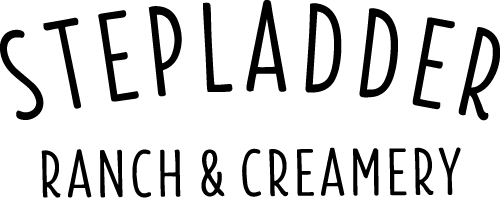Everything Under One Roof
From milking to production and aging, all of our cheese is produced right here inside this hundred year old barn in Cambria, California.
Our creamery is where all the delicious cheesy magic happens. Inside our facility, there are four main areas for production: the milk house, the barn, packaging and cheesemaking.
Starting in the Milk House
Starting with the Milk House, goat milk is pumped from the milking parlor, traveling through our pipeline system, through a filter and into the 200 gallon bulk tank in milk house.
The milking parlor is where the first part of our production begins... if you don’t count the breeding, birthing, raising, feeding, pasture maintaining, snuggling, and general caretaking of the goats, that is!
Every day, twice a day, for about 8 months of lactation from spring to fall, we milk our goats at 7am and 4pm. No days off for the goats or for us! Between four of us creamery workers we all take turns during the 14 milking shifts each week.
The bulk tanks have a refrigerated jacket and an agitator inside, so the milk begins cooling immediately and evenly. This 500 gallon bulk tank is for cow’s milk storage. Earlier we discussed the seasonality of goat breeding and milking. Since our goats only lactate from spring to fall, we have about 4 months where we aren’t getting any milk from them. As much as we would all like to take a 4 month vacation each year, it is more important to us to continue utilizing our creamery equipment and staff to make fantastic cheese for our community.
Our cow’s milk cheeses have become equally as popular as our goat’s milk cheeses, we continue to use cow’s milk all year. We also make a number of mixed-milk cheeses, which are a fun way for us to get creative and develop our own signature cheese recipes!
When we are ready to make a batch of cheese, we will hook up pipes to a bulk tank and use this motor to pump milk over to our creamery.
Inside the Art & Science of Cheesemaking
Once we have pumped goats milk, cows milk, or a combination, over to our cheesemaking vat on the left, we first do a low-temp pasteurization: we heat the milk to 145 degrees for 30 minutes. A low-temp pasteurization will remove potentially harmful bacteria, while preserving the proteins and integrity of the milk, as opposed to ultra or high-temp pasteurization which is often used at a larger industrial scale.
The Basic Process
The first ingredient added to the milk is the starter culture. A culture is a specific group of bacterias, now isolated and propagated for many centuries, that will convert the lactose (milk sugar) into lactic acid. Yes, you heard correctly- cheese is made from bacteria! We use different types of cultures for different types of cheese, because each culture will result in different flavor, texture, and acidity.
The next ingredient we will add is rennet. Rennet is an enzyme that reacts with the milk to coagulate the proteins (the milk solids), separating the solid curd from the liquid whey.
Once the curd has set, it will have formed a jello-like mass. We then cut the curd with steel harps and “cook” the cheese. For a firmer, drier cheese like Parmesan, the curd is cut into small, rice sized pieces, and is cooked longer, so more moisture is expelled from the curds. For a softer cheese, the curd is cut into larger pieces and cooked less.
The liquid milky whey is drained, and we scoop the curd into moulds like this one, with a mesh basket inside. There are holes all around the mould; we put this hat on top, and press all the moulds under weights overnight to expel more of the whey. In the morning we will pull the basket out, and we will have a firm but fragile wheel of cheese. The wheel is then salted and placed on racks in the aging room for anywhere from 2 weeks to one year. Generally, the longer a cheese is aged, more moisture is pulled out from the cheese and the flavors become more concentrated, or “sharper”.
So, the most basic ingredients in cheese are just milk, culture, rennet, and salt. There are many subtle variations that will result in different cheeses. We add a fungal culture, Penicillium candidum to our bloomy rind cheeses, that will proliferate on the exterior of the cheese when exposed to oxygen, creating that distinct and delicious white rind that you find on brie and camembert cheeses. Some of our cheeses are washed with alcohol like cider, which can provide a softer rind with a nice, ripe flavor.
Our Farmstead Promise
As a farmstead creamery, we raise our goats on the farm and make cheese from their milk, which allows us to manage every aspect of our cheese production.
Our goals are to create world class products and to provide a positive and meaningful workplace for our staff, as well as a healthy, sustainable environment for our animals.
Thank you for supporting our farm and creamery.

